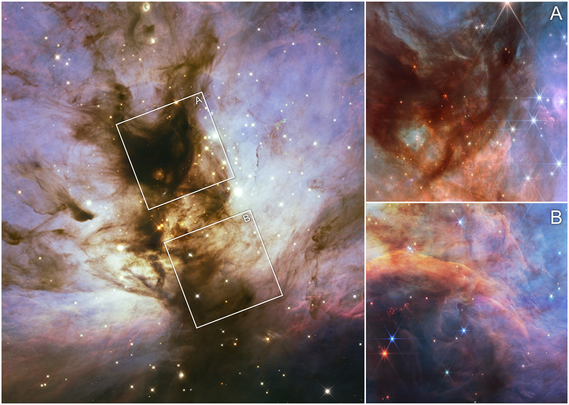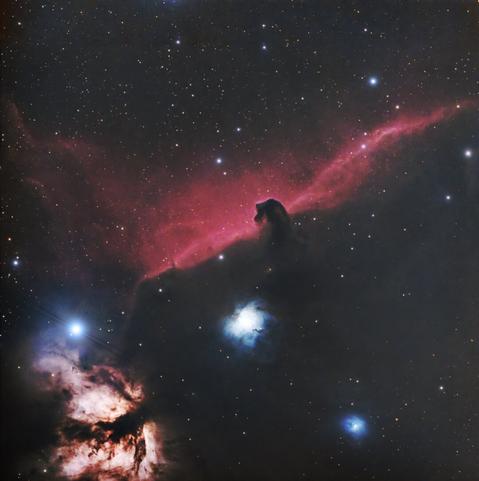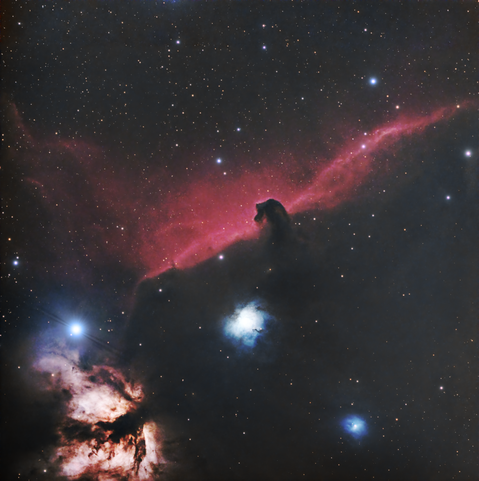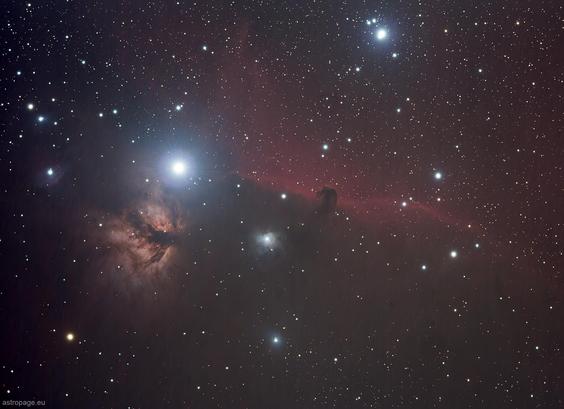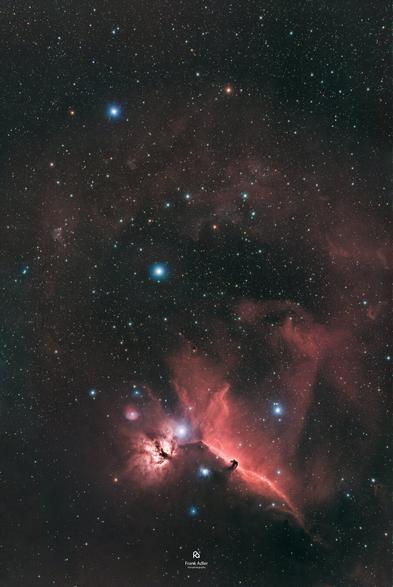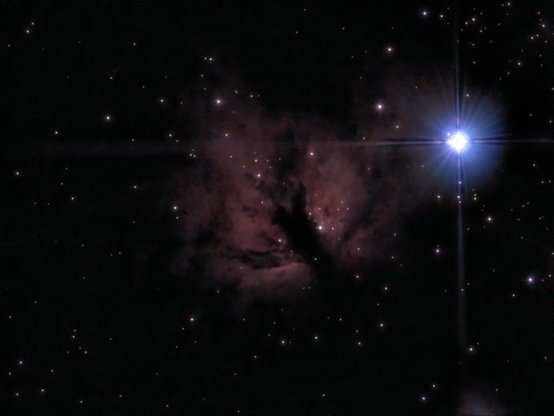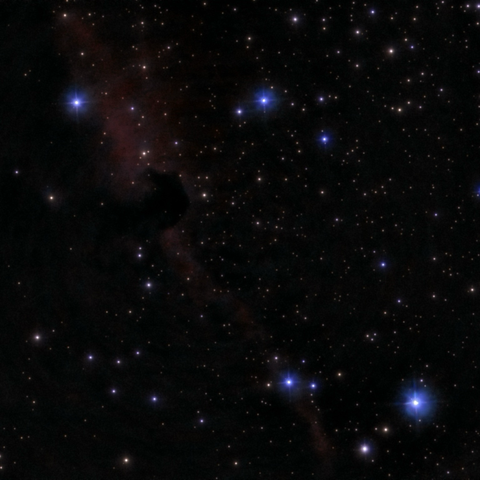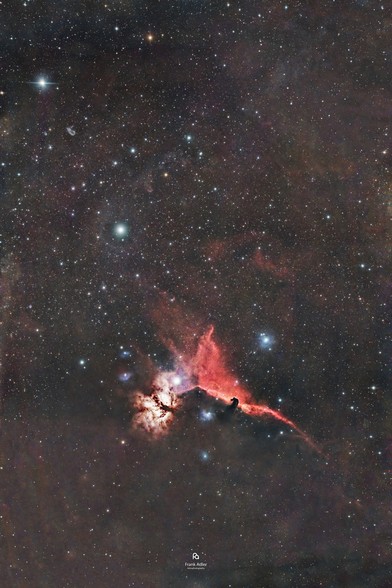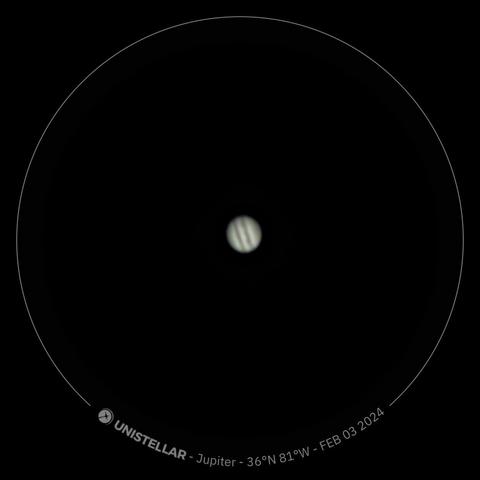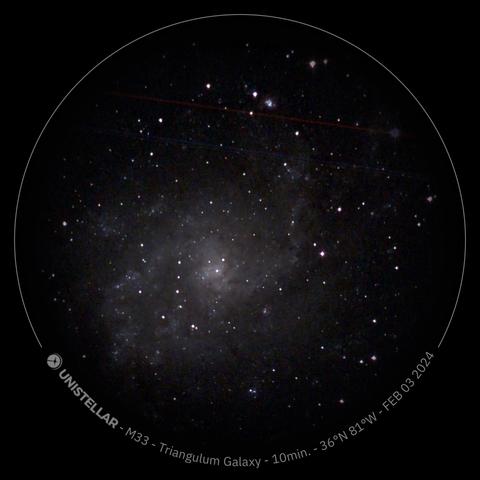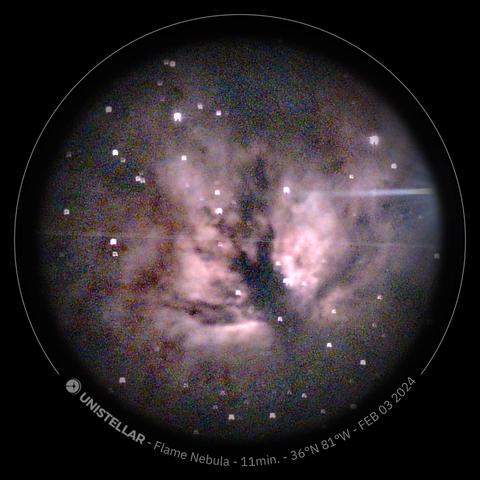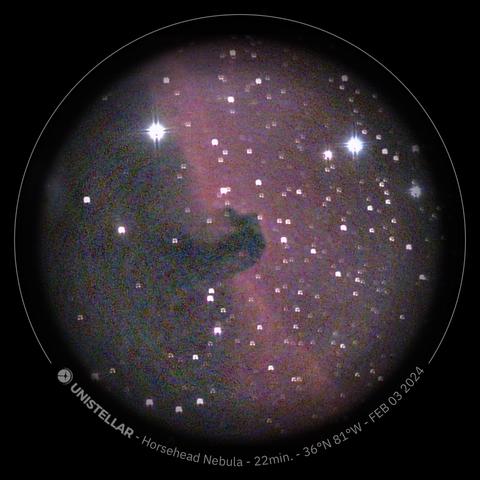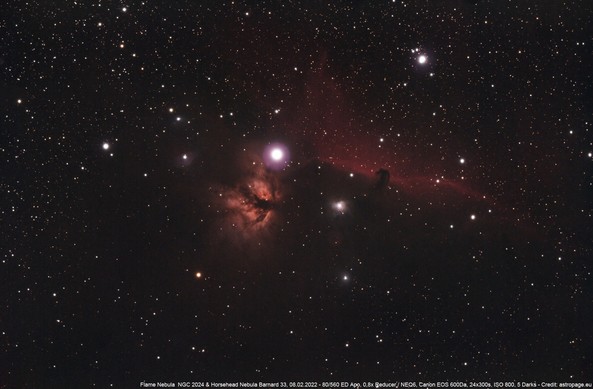Identification of a Turnover in the Initial Mass Function of a Young Stellar Cluster Down to 0.5 MJ: https://iopscience.iop.org/article/10.3847/2041-8213/adb96a -> NASA's Webb Peers Deeper into Mysterious #FlameNebula: https://webbtelescope.org/contents/news-releases/2025/news-2025-105
#FlameNebula
#YorkU #AllanICarswellObservatory #YorkUObservatory #Astronomy #Astronomer #Space #Star #SpaceFacts #Science #Alnitak #HorseheadNebula #FlameNebula #SpaceScienceSaturday #SpaceFacts
I remember seeing the Horsehead nebula in my parents’ encyclopedia as a kid. I was amazed at how such a thing could exist. And now technologyy has evolved so far, that I can take the same picture from my own backyard!
Here it is accompanied by the Flame nebula in the lower left together with the star Allnitak, which is the left most star in Orion’s belt. #horsehead #B33 #NGC2023 #horseheadnebula #flamenebula #astronomy #astrophotography #deepsky #backyardastronomy #astroshots #astrophoto #Space #universe #galaxy #universetoday #nightsky #stars #galaxy #nightphotography #skywatcher #touptek #backyardastrophotography
========
Orion’s Belt is a well-known asterism in the constellation Orion. It consists of the three bright stars Alnitak, Alnilam, and Mintaka. These stars are more formally known as Zeta (ζ), Epsilon (ε), and Delta (δ) Orionis, respectively. The belt is one of the most easily recognizable asterisms in the night sky, being far more noticeable than the Big Dipper. The stars are more or less evenly spaced in a straight line, and so can be visualized as the belt of the hunter’s clothing.
The area around Alnitak with the Flame and Horse Head Nebulae is a classic target for astrophotographers, but I tried to put it into a bit more context, also highlighting the lighter dust regions between Alnilam and Mintaka.
The iconic Horse Head Nebula is a dark nebula roughly 1.500 light years from earth, consisting of a swirling cloud of gas and dust resembling the shape of a horse’s head.
Scope: Askar 103APO
Lens: Askar 0.6x Reducer
Camera: Canon EOS 6Da
Filter: Antlia TriBand RGB Ultra
Mount: Skywatcher AZ-EQ5 GT
Guiding: Svbony SV165 Guide Scope with ZWO ASI 224MC
Controller: ZWO ASIAir Pro
Integration time: 3hrs 35min
Full version and print available at: https://adfr.io/astro/20250121_ic434
#astrophotography #astrophoto #astrophotographer #deepsky #deepskyphotography #deepskyobject #deepskyastrophotography #horseheadnebula #flamenebula #ic434
Concentrated on nebulas this evening. Viewed the Flame Nebula and (with my longest exposure to date at 40 minutes) the Horse Head nebula. #unistellar #odysseypro #space #astronomy #amateur #FlameNebula #horseheadnebula #nebula
#HorseheadNebula + #FlameNebula taken from #Oxfordshire, UK on 2nd January 2025. 70mm refractor, astro-modded #Canon1100D #AltairQuadbandFilter. 65x90sec at ISO-3200 #Astrophotography #Nebula #Space #Barnard33
The #FlameNebula, #Sharpless 277, is a bright #emissionnebula located in the #constellation #Orion, approximately 900-1,500 light-years away from Earth. It reaches its annual culmination at astronomical midnight mid December.
detailed Information: https://astrocamp.eu/en/sharpless-277-flame-nebula/
▼ Vixen ED80sf | EOS M100(a) '21
#astrophoto #astrophotography #nightsky #space #sky #astronomy #telescope #clearsky #photography #nature #astrodon
==========================
It's already pretty late for this target, but I still wanted to give it a try. IC 434 and NGC 2024 are some of my favorite deep sky objects, located around Alnitak in Orions belt.
Scope: Askar 103APO
Lens: Askar 0.6x Reducer
Camera: Canon EOS 6Da
Filter: Altair Tri-Band
Mount: Skywatcher AZ-EQ5-GT
Guiding: Svbony SV165 with ZWO ASI224MC
Controller: ZWO ASIAir Pro
Integration time: 1hr 40min
Full version and print available at https://adfr.io
#astrophotography #astrophoto #narrowband #narrowbandimaging #deepsky #deepskyobjects #deepskyphotography #ic423 #ic426 #ic431 #ic432 #ic434 #ic435 #ngc1990 #ngc2023 #ngc2024 #horseheadnebula #flamenebula #orion #orionsbelt #widefield #nightsky #nightskyphotography #nightskyart
Es ist schon ein bisschen spät für dieses Ziel, aber der Pferdekopfnebel gehört zu meinen Lieblingsobjekten und ich wollte es gern noch versuchen.
Volle Version und Details: https://adfr.io/astro/20240229_ic434
#astrodon #astrophotography #astrophoto #narrowband #narrowbandimaging #deepsky #deepskyobjects #deepskyphotography #ic423 #ic426 #ic431 #ic432 #ic434 #ic435 #ngc1990 #ngc2023 #ngc2024 #horseheadnebula #flamenebula #orion #orionsbelt #widefield #nightsky #nightskyphotography #nightskyart
A bit of #astronomy this evening via my #evscope #jupiter #horseheadnebula #flamenebula #trianglenebula #m33 #unistellar
Astrophoto: Orion Region – 02/22 https://astrocamp.eu/en/astrophoto-orion-region-02-22/ Legacy Lens from the 1970th meets my new workflow in 2024. The reprocessed version of the Orion region. … #DeMarian'sNebula #FlameNebula #M42 #M43 #Messier42 #Messier43 #NGC2024 #OrionNebula #SH2277 #Sharpless277 #clearskies
Astrophoto: Horsehead Nebula – Barnard 33 – 12/21 https://astrocamp.eu/en/astrophoto-horsehead-nebula-barnard-33-12-21/ My 2023 reprocessed version of the Horsehead Nebula data from december 2021 with duo-narrowband filter. … #Barnard33 #FlameNebula #HorseHeadNebula #IC434 #NGC2024 #SH2277 #Sharpless277 #clearskies
Horsehead and Flame Nebula
I have found that I am no longer able to complete a project in a single night, or even in several consecutive nights. As the end of the season is approaching, I have stopped working on my Horsehead Nebula and Flame Nebula project after only two hours of data and saved it to continue next year.
Blog: https://smilingj.net/blog/2023/03/2023-03-10_setting_up_projects_horsehead_and_flame_nebula.html
#astrophotography #horseheadnebula #ic434 #flamenebula #ngc2024 #ngc2023 #heq5pro #130pds #asi294mcpro
#SkyWatch #Astrophotography The #FlameNebula is a small emission nebula about 900 to 1500 light years from us. The #HorseheadNebula is the small dark area amid deep red ionized hydrodren located about 1500 light years from us. Both are part of the rich molecular complex in the winter constellation Orion. The faint colors in the darker part of the sky hints at the potential to capture even more detail when I add to the 60 minutes of exposure that created this image. #StillLearning
#astronomy #ic434 #flamenebula
and while i was in this area of the sky - i took a shot from IC434 - also known as the Flame Nebula
Noch ein Test bei Fast-Vollmond: #Flammennebel & #Pferdekopfnebel
Another test under nearly full Moon: #FlameNebula & #HorseheadNebula
https://www.astropage.eu/wp-content/gallery/nebel/flammennebel08022023_lab.jpg
#Astrofotografie #Astrophotography #Deepsky #Amateurastronomie #Amateurastronomy
#SkyWatch #Astrophotography The #FlameNebula and #HorseheadNebula are star formation areas in the #Orion molecular cloud about 1300-1500 light years from Earth. I captured five 2 minute exposures Saturday night before the clouds rolled in. I stacked and processed them in SiriL and GIMP. I'm pretty happy with my post-processing in this image but I am clearly #StillLearning.
